Wildfires. Hurricanes. The pandemic. Job loss. School uncertainty. Racial hatred. Foreign intelligence hacking. The list of things giving us fear and anxiety goes on and on.
According to a study published just this week, nearly a quarter of people in the United States are experiencing symptoms of depression, fear and anxiety. That’s nearly three times the number before the COVID-19 pandemic began. These are anxious times no matter who we are and what we’ve experienced.
Anxiety is, perhaps, the most pervasive suffering in the world. Whether we’re chronically anxious and have some DSM diagnosis or whether we’re gripped periodically. Anxiety affects our health, our relationships, our work and our overall well-being.
Fear and anxiety is embedded in our membranes. In order to survive millions of years ago, all beings had to be vigilant about danger. Rooted in all life forms is a mechanism that apprehends any sense of vulnerability or possible death. The brain senses that it needs to be in control at all times in order to keep the physical form in existence. It’s in our DNA that our nervous system is continually scanning for past unpleasant and future unpleasant sensations.
The challenge is that we get fixated on fear and anxiety: what is going to go wrong or what is wrong right now. When we get hooked in this ongoing fear, we begin to identify ourselves with the fear. We become driven by fear. In fact, our very identity becomes defined by fear. When this happens, we suffer.
This fixation triggers the mind and body to respond in 1 of 3 ways – all of which create anxiety and stress. We freeze. We fight. Or we flee. When we react and find ourselves in one of these 3 states, we disconnect from our true nature and our innate creativity.
Aung San Suu Kyi, a pro-democracy activist, and leader of the National League for Democracy in Burma, who has spent time in prison for her activism, says
The only real prison is fear.
The only real freedom is freedom from fear and anxiety.
The truth is that we create our own prisons by not opening up to the fear. Instead, we figure out ways not to feel the fear:
We speed up. We get busy. The to-do list spans pages.
We set out to prove ourselves. To achieve more.
We experience shame and in turn, blame others.
We build walls around us to protect ourselves, physically.
Internally, we build walls around the heart and contract the body/mind. We develop a permanent suit of armor, always on guard for what might happen next. This suit of armor creates our own prison, and many of us live here day in and day out. Especially now.
Just how do we free ourselves from our own prison of fear and anxiety?
Here are a few tools that may prove helpful:
Noticing What’s Happening:
We begin simply by noticing what’s happening, what we’re feeling, what we’re thinking. In noticing, we give space to what is here, right now. If we recognize the feeling, the thought, the belief, we can name it, “Worrying. Projecting. Fearful.”
In naming what we observe, we become less identified with the feeling. It’s as if we are detached from the observation and simply noticing what’s happening right here, right now.
Welcome What’s Happening:
Once we can recognize what’s happening, we’re encouraged to give space to what’s right here. To breathe into the sensation and allow it to be there. We can even acknowledge the sensation, by silently saying, “Yes,” to whatever is right here. “I see you. I feel you. We’ve met before.”
Many practitioners encourage us to invite the feelings in for a cup of tea, as a way of welcoming the sensation. “Please come in. Sit down. How about a cup of tea with me?”
What I am Believing?
When we’re able to pause long enough to notice and welcome what’s happening, we can then ask ourselves, “What am I believing in the moment?”
The beliefs may feel very real, but are they true?
We then may want to ask ourselves, “Who am I when I believe these beliefs?” Practitioners encourage us to put one hand on our heart and one hand on our belly as a gesture of attention and care to ourselves.
We may ask ourselves, where do these beliefs lodge in my body? Are they constricting my breath? Do they make my heart beat faster? Is my belly tightening? Mindfulness practitioners have known for millennia that beliefs, thoughts and feelings lodge in the body. Science is catching up and proving them to have been correct all along.
Responding with Compassion
When we can determine where in the body the fear, anxiety and fixation lie, we can then respond with lovingkindness and compassion. Buddhist teacher, Thich Nhat Hanh, encouraged his students to respond with, “There. There.” A gesture and acknowledgement of, “I know you suffer and I am here.”
When we can show up for ourselves with compassion and kindness, we allow space for what is happening right here, right now. We don’t need to argue with reality. We can accept what is with a sense of spaciousness and openness. We can relax and breathe into it, even welcome it for what it may teach us.
This spaciousness, in turn, becomes our freedom. In this moment, we can breathe in that spaciousness and know that no matter what, we don’t have to identify ourselves with fear. It is not who we are. Fear is a feeling that comes and goes. It doesn’t have to imprison us. We don’t have to live in ones we’ve erected for ourselves. We can breathe and let go.
There. There.
Blog Resource: Whole Families Intervention & Services, Inc.

